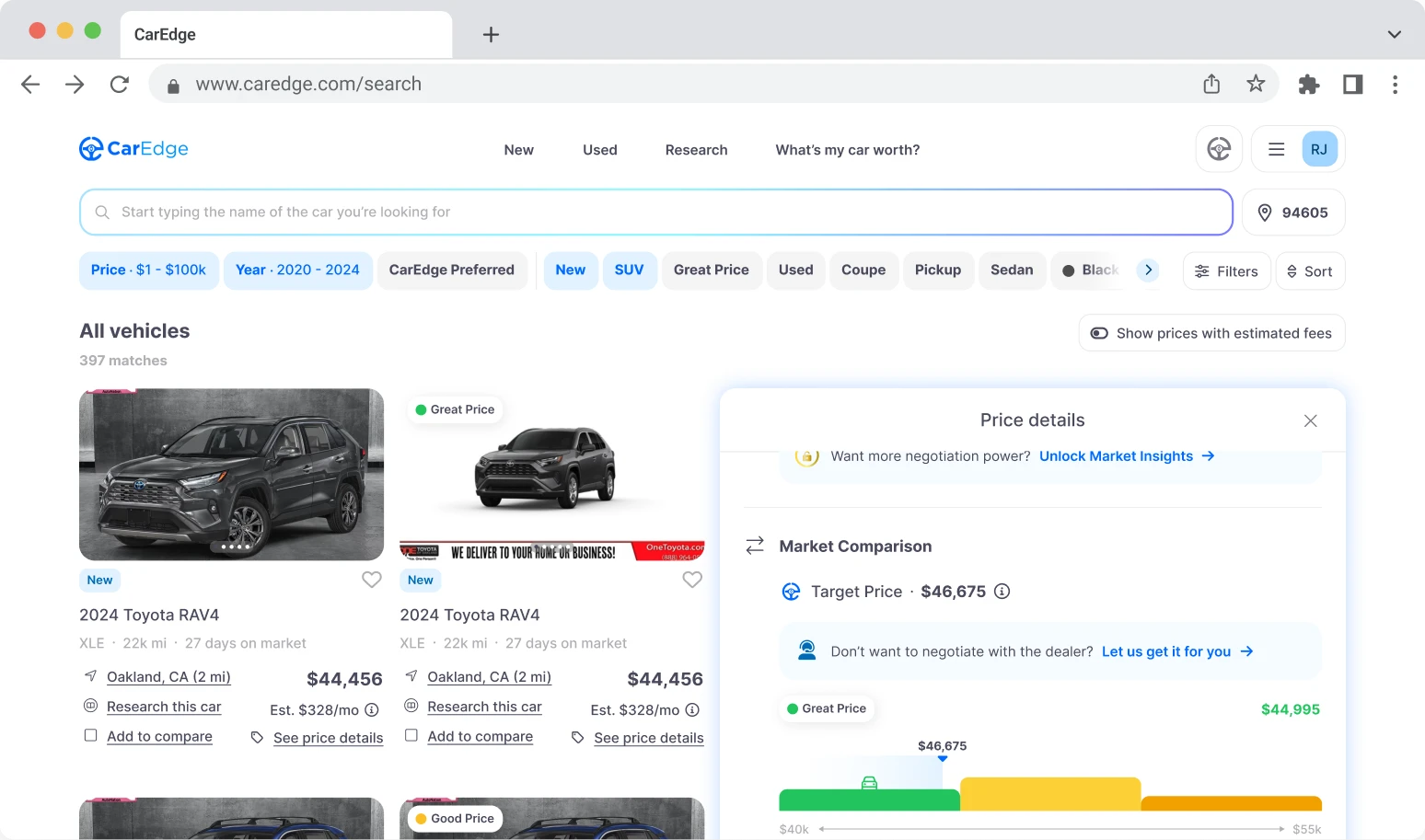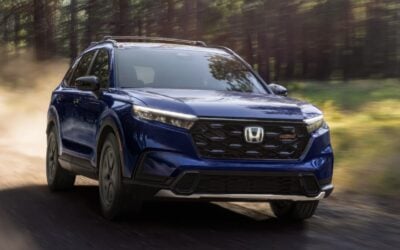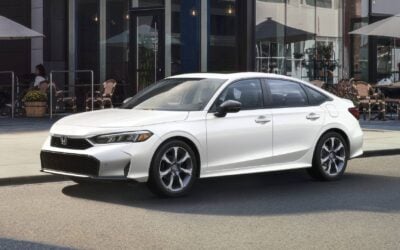“I got a great deal.”
“How do you know?” I asked?
“Well, I negotiated over $2,000 off the original price, so I’m pretty sure I made out well. Didn’t I?”
After doing this for as long as I have, it doesn’t take long to burst someone’s bubble.
“Maybe you did… I know when I was managing dealerships I told my salespeople that they needed to be ready to lower the price three time during a negotiation — the customer always likes to win three times, then they’ll buy the car.”
I don’t take pride in bursting their bubble, it just comes with the territory at times.
“So, in your case, that $2,000 you shaved off the price is certainly some hefty savings, but I’d venture it was baked into the price they initially quoted you.”
The look on my son’s friend’s face was starting to sour.
“Don’t fret though, I’m sure they only made a couple hundred or maybe a thousand dollars off your deal, it’s just there may have been more room to negotiate.”
In today’s internet era, you may feel like you know how much wiggle room there is to negotiate on a new car, but at the end of the day, as a consumer, it’s hard to really know. Sure, tools like Kelly Blue Book can help you understand what a car is worth, but KBB and others miss out on vital pieces of information (such as manufacturer incentives, how long a car has been on the lot, and more).
When it comes to knowing how much you can negotiate on a car purchase there are 3 vital pieces of information that I always look for, and if I were you, I’d do the same.
- The window sticker
- Learn what incentives are in place for the dealer
- How long the car has been on the lot
Let’s explore each one of these.
You might also enjoy this article if you haven’t read it already: How Much Do Dealers Markup Used Cars?
How much you can negotiate depends on the window sticker

The window sticker is the Manufacturers Suggested Retail Price, hence MSRP. What you need to find out is the percent of margin built into that MSRP. For example, for many less expensive cars (Toyota, Hyundai, etc.) the percent of margin (markup) might be very little, as little as only 2 or 3% of the MSRP.
It’s important to understand that the dealer buys the car from the manufacturer at the invoice price, and then lists the car for sale at or near the MSRP price. This is the retail price.
That means a car with an MSRP of $18,000 might only have $360 of profit built into it.
👉 Get the window sticker for free (don’t let others charge you for this!)
Generally speaking, and as a rule of thumb, the more expensive and luxurious the car, the more margin is built into the retail price. Where an $18,000 car may only have $360 of profit built into it, a $100,000 car may have as much as $10,000 in margin.
How can you determine what the dealers mark up on a car is? Unfortunately, it isn’t an exact science because it changes from car to car and dealer to dealer. However, you can use the guideline of 2 or 3% on less expensive brands, and 5 to 10% on luxury brands as a rule of thumb.
Regardless of if you’re buying a Kia or a Mercedes, the reality is there isn’t too much room to work with when just looking at the mark up. This is where factory incentives come into play.
Dealer and customer incentives matter too
Dealer incentives (also commonly referred to as factory incentives) are put in place by the manufacturer and allow for greater price flexibility because they artificially inflate the margin on any given car. The percent of margin in new cars can range from a low of 2% to as high as 15%, including all incentives.
The internet is a wonderful tool for finding information on incentives for particular cars. Bear in mind that there can be two types of incentives; customer incentives and dealer incentives.
Customer incentives

Customer incentives range from rebates to special loan interest rates. Rebates can be as little as $500, or as much as $10,000 depending on the brand and the model. Other customer incentives can take the form of recent college graduate programs or active military or retired military and first responder programs.
There can also be hidden incentives based on who you work for or where you graduated college. Always ask the dealer about these types of programs and incentives, because it doesn’t cost them a dime! These programs and offers are usually through the manufacturer, so the dealer has no reason not to assist you here.
Customer incentives are relatively easy to learn about. Manufacturers actively market their recent college graduate programs, and websites like Edmunds.com keep track of constantly changing rebates and incentives.
Dealer incentives
Dealer incentives on the other hand are much harder to know about, and they can greatly affect how much you can negotiate on a new car. Manufacturers have monthly, quarterly, and even annual sales incentives for their dealers.
You need to understand that manufacturers have one objective, and that is to sell as many cars as possible. Many manufacturers are public companies. That means that each quarter they need to share their finance metrics with shareholders. Shareholders want to see that manufacturers are growing and selling more cars.
With that understanding, it’s easy to see why manufacturers put sales incentives in place for their dealers. Manufacturers need dealers to move as many cars as possible so that the manufacturer’s shareholders are excited about the brand’s growth.
Dealer incentives are quite significant. For example, a BMW dealership that hits their monthly sales incentive could receive $50,000 to $200,000 from the factory depending on their sales volume.
Obviously this means the dealer will be happy to lower the price on a car so that they get the kickback from the manufacturer. Use this to your advantage! Always ask the dealer how close they are to hitting their goal, if they need one or two more sales to get there, guess who just picked up some leverage? Yep, you!
How long has the car been on the lot?
The third criteria to know how much you can negotiate on a new car is how long the vehicle has been sitting on the dealers lot. The age of a car, and specifically how long it has been at a dealership can drastically affect a dealers willingness to discount a car.
If you’re looking for the car with the most “wiggle room,” then ask the dealer for the oldest inventory.
You might also enjoy this article if you haven’t read it already: What Happens to Unsold New Cars?
The reason for this is quite simple, the longer a car sits on a dealer’s lot the more it costs them (we talk about carrying costs in this post). This increases the dealers incentive to sell the car, and ultimately to save you more money.
By showing your interest in their oldest car, you’ll immediately get their attention. Make it clear you’re willing to entertain the “old” car if they make the price less than a younger (a similar car that has spent very little time in inventory). I can assure you from my 42 years of experience, they’ll be happy to do this for you.
Cars, unlike fine wines, don’t necessarily get better with age. Dealers want “old” cars gone! That gives you leverage, and getting a good deal is all about leverage.
So, now that you have some inside information you should feel more comfortable negotiating your next car deal. However, if you are like the majority of people that just hate to have to deal with this type of negotiation, there is help for you. Learn more about buying with CarEdge. We do the negotiating for you, and have your car delivered to your door.
👉 Check out this month’s best new car incentives (0% APRs, lease deals, and more!)













The only criteria I would disagree with is “time on the lot”. I tried to purchase a 2019 Mustang. It had been on the lot for 18 months
and they were not even interested in talking about it. My first attempt was to make an offer online that according to my research was really good. Since this was not long after they got it I was not surprised. A year later I went into the dealership and they still did not even
seem interested in talking about it. It’s a small town dealer and they never have more than a few Mustangs. I cannot understand their
very laid back attitude?
I guess when this article’s owner mentions able “lot days”, he was meant for used cars. A 2019 Mustang is (in my humble opinion) sought more than a brand new 2020 due to their unproportioned year vs. price differences. For an example, a 2019 when it first came out brand new that year listed for $40k, a year later a new model came out for the same $40k but now the 2019 model dropped $6k to $34k, 9/10 people would buy the $34k. And the dealers would make more money using the trick “a new model came out so we discounted this last year model, you are getting a very good deal”.
Information is power. Having the “negotiation/ leverage” advantage (thanks to this article) is providing me with critical car buying advise. Once I get closer to making a purchase, i may sign up for the 15 minute consultation. Thanks again for sharing and excellent and informative article.
I am trying to find some information on a 2020 Genesis g80 that the dealer Huffines in Dallas Texas is selling and look everywhere and i couldn’t find the time the car has been on the lot, Can anyone help me? I tried cargurus, autotrade, and nobody could give me the information.
Luis, our Market Price Report provides exactly that information. Email me directly and I will help you. zach(at)wordpress.caredge.kinsta.cloud
Hi Zach, I really like the 2021 Kia Telluride awd, Wolf gray or Glacial white with a Dune Brown Interior. It looks like I have to order the SUV and have been nervous about ordering it here in Chicago. I’ve built the SUV on Kia”s web site and have an idea, including destination. It seems like its a very desired SUV and I’ve already test drove it and have been trying to get info from local dealership(s) via email and looked into the Costco buying program, but no local dealership’s show up as participating dealership(s), except for one: in Duluth, Georgia (for Costco). Any and all Advice would be appreciated, Thanks.
Great insights! I didn’t realize how much flexibility there could be in negotiations. Definitely going to approach my next car purchase with these tips in mind. Thanks for sharing!
Hi Zach,
I’d really like to purchase a Mazda CX 5 before the end of 2024 and have my eye on one at a dealership. I have watched car edge videos about negotiation, and I know you suggest trying for 8-10% off. I’m wondering if I should try for more, maybe somewhere between 15 or 20% off. Is this too ambitious? They seem to want to move cars, but December is a busy month. I know my leverage is end of quarter and end of year sales goals for the dealership, but this dealership and only one other has what I need: no black interior.
Some other info I was thinking about: It’s a Ford/Lincoln, Mazda, Hyundai, Nissan dealership. According to Cox automotive, aren’t they 4 out of the 10 top brands with the most cars with a high number of days on the market? Does this make a difference in negotiation or not? When I asked to see a Mazda the sales person said “Sure, we’ve got lots of them, look around.” And they called me back pretty quickly trying to get me to buy at the end of November.
I’m aware of the email tactic of contacting sales managers, but there are only about 10-15 Mazda dealers in MD. And I’ve only found 2 so far that have vehicles with no black interior. If you emailed 100 Toyota dealers and only got back 10 responses, I’ll be lucky to get back one!
I’d like to know your thoughts on this.
Hi Kristin,
8-10% off is definitely doable, anything more than that is possible but will require quite the effort and negotiation. The good news is that Mazda has some great financing offers right now for the CX-5. 0% APR for 36 months, and for longer terms, the rates will be competitive too. https://caredge.com/guides/the-best-auto-loan-rates-in-december-2024#Mazda_Financing_Deals